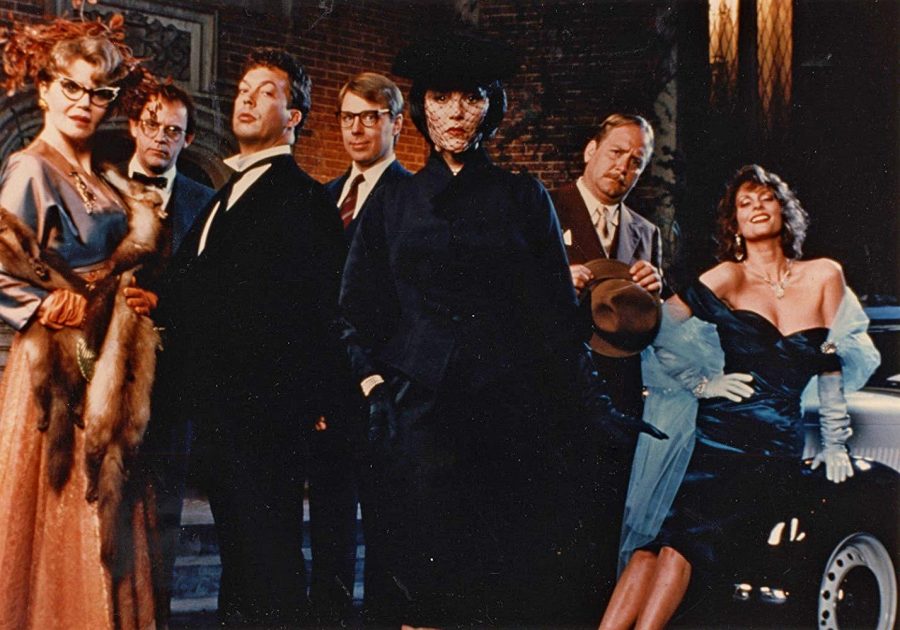The Beauty Of Clue
December 5, 2019
“The Beauty Of” explores media on the line between popular and obscure, and the reason it lies here under the label of “Cult Classic”.
This article contains spoilers for the 1985 movie Clue.
Clue began as a board game. The goal was to be the first to solve the murder of Mr. Boddy(denoted as Dr. Black in some editions), the man hosting a party you and the other players just so happened to attend. There’s a bit of plot and character behind each of the solid-colored game pieces, but not enough to make a movie… However. A few changes to the underlying plot, some more changes to the characters themselves, and an addition of a semi-recurring theme of Communism™ were brought into the mix to make it something completely of its own. The 1985 movie Clue was a comedy/murder mystery that drew from a game that was a parody of the murder mystery genre. It feels like a parody of a parody.
So, unlike my Rocky Horror article, I’m actually not going to go into all that much cultural analysis in relation to this. I’ll talk about the communism thing for a bit, but as it turns out: “Communism was just a red herring.” This is not entirely true, actually, but it is a line stated multiple times by multiple characters.
So, the plot. It is fairly self explanatory: a seemingly unconnected set of guests are all invited to a mysterious mansion, and are greeted by a few people working in the mansion. The host himself is nowhere to be found, and the Maid(Yvette), Cook(Mrs. Ho), and Butler(Wadsworth) all seem reluctant to talk about him and his whereabouts. It is eventually revealed that all of the guests, and even the staff are being blackmailed by the host(Mr. Boddy). Professor Plum is an ex-psychologist, being blackmailed for fooling around with a patient. Ms. White is a widow of many, being blackmailed for killing her ex-husbands. Mr. Green is gay, Colonel Mustard has commited war crimes, Mrs. Peacock sells her Senator husband’s votes to lobbyists, and Ms. Scarlet runs a brothel.
After that is dealt with, Mr. Boddy arrives and hands everyone weapons like he’s Oprah and the Purge has begun. He says that Wadsworth is behind everything, and then turns off the lights in the expectation that everyone will go after Wadsworth. Unfortunately, he gets shot instead and the rest of the movie is spent trying to figure out who did that, as well as the other five murders that end up happening along the way. Despite all this, as I said earlier: It is a comedy. Some of the humor is kind of ridiculous and juvenile, but the dialogue is pretty great. Part of the reason for the movie’s popularity is how quotable it is; with such gems as “Yep, two bodies. Everything’s fine,” and “Life after death is as improbable as sex after marriage”.
While some of the humor is kind of awful(there’s a dog poop joke that goes on for far too long), and some is a little dated(“I thought they called men like you a fruit”), overall it’s a pretty funny movie with quick, witty dialogue(delivered perfectly by Tim Curry, the actor playing Wadsworth). Despite this, it flopped spectacularly when it was first released in movie theaters. This was, as with all movies, due to a lot of factors, but I am going to focus on the most interesting and most major one. The movie in question actually has three different endings, with different people being the murderers in each one. The first two are… honestly mediocre. Both of them have one of the main characters being the murderer of most of the victims, with the motive just generally being “eliminate those with proof of my wrong-doing”. They’re pretty short, and they both end with said murderers being brought to justice by Wadsworth(who happens to be involved with the FBI). They feel sort of… empty, I guess. Ending the movie just with one of those would make it feel inconclusive, and ruin the whole experience. The last ending is the most recognizable, and for good reason. In that one, each victim is killed by a different guest for their own special motive, except for Plum. He shoots Mr. Boddy, except Mr. Boddy is actually Wadsworth, and the guy who’s been saying he’s Wadsworth is actually Mr. Boddy. He’s behind everything, and orchestrated this situation so that the guests would kill off all the informants for him, so he could continue blackmailing them even more aggressively. Then, it’s revealed that not only is Mr. Green working for the FBI, he’s also secretly very cool and also heterosexual, and shoots Wadsworth to death. After that, everyone is arrested except for him. This ending is the longest, makes the most sense, and is objectively the coolest, but unfortunately movie theaters dealt with it completely incorrectly.
Movie theaters ruined this film’s chance at initial success when they decided to play with the fact that it had multiple endings. One of the three would be chosen at random to play at the end of the movie, which is an interesting concept but only works when all of the endings are equally good. Since the last one is seen as the “true” ending by everyone involved in production, it was the one with the most care poured into it while the others were mostly filler to achieve the quirky effect of multiple endings. This wasn’t actually a bad idea or anything, and those first two are necessary to appreciate the full effect of the movie, but by themselves they suck. People walked out of theaters like “This is grody”, and slowly the film was strangled to death. Luckily, when it was released on DVD all three of the endings played in order, with title cards in between that said “This is what could’ve happened”, “Or this”, and “But this is what really happened”, solidifying the fact that the last ending is in fact the correct ending. If it hadn’t been for this, the movie probably never would’ve joined the ranks of other cult classics and would’ve been forgotten to trashy comedy history. Its odd charm and interesting dialogue ultimately saved it from an eternity in the Walmart Discount Movie Bin, which I personally am thankful for, as there was some very good Tim Curry content in there.



